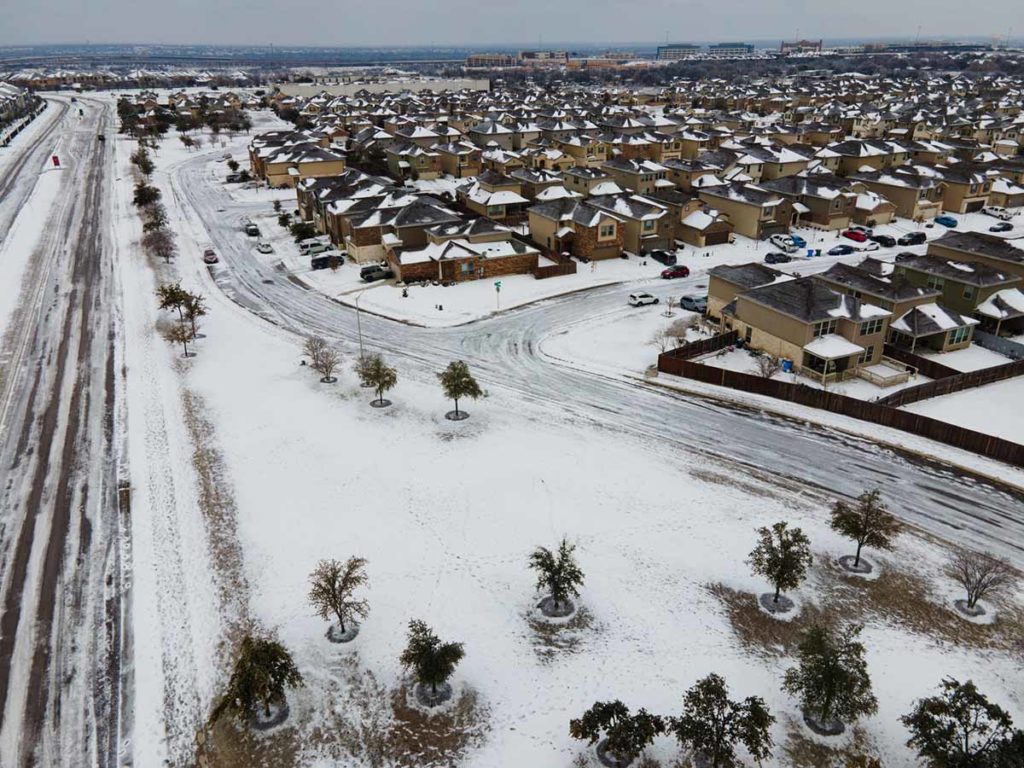
A year after a prolonged severe winter storm caused the near-collapse of the Texas power grid and left more than 4 million households without electricity, state lawmakers, regulators and power providers have worked to assess the causes of the outages and harden critical infrastructure. When another cold snap hit the state early this February, those measures were tested in real-time.
Julia Harvey is vice president of government relations and regulatory affairs at Texas Electric Cooperatives, the statewide association that represents 76 co-ops serving more than 4 million members. She recently discussed steps that have been taken over the past year to shore up the energy grid and what still needs to be done.
The widespread outages last year have been largely attributed to failures in the state’s natural gas infrastructure, is that right?
Harvey: Yes. There was some interplay between natural gas assets and the electric utility system that we had not seen to this extent before. When some aspects of the natural gas transmission system were affected by sustained freezing temperatures, multiple electric generation resources were not able to operate at full capacity because their fuel supply was constrained.
The loss of fuel access for electric generation became a multiple-day event. Because so much generation was unavailable and demand was so high, ERCOT [the Electric Reliability Council of Texas], which manages the statewide grid, had to invoke load shedding operational rules to help stabilize the system.
What have you learned in the past year, and what tangible steps have been taken to reduce the chances of such extreme disruptions from happening again?
Harvey: The susceptibility of certain infrastructure to freezing was central to changes in both legislation and Texas Public Utility regulations. More than 4,000 access points on key utility infrastructure have been inspected since September, and enhanced weatherization measures have been implemented to support increased resiliency during extreme weather.
According to ERCOT, on-site inspections have been completed at 302 generation facilities and 22 transmission facilities, and 321 of those sites now meet winterization requirements imposed by the legislature and the PUC. As important as generation weatherization is, a reliable grid can only be achieved when the gas system is also weatherized.
In regard to the [natural] gas system, an additional reform relates to a new critical infrastructure map being created by the PUC and the Texas Railroad Commission, which regulates the oil and gas industry. This map will reflect current and future operational needs related to the gas supply chain. That allows certain gas transmission assets to be designated as essential so they are prioritized by electric utilities during a load shed event. Gas facilities identified on the map will also be required to weatherize, which will support increased resiliency on the system.
Are you confident that all the relevant state agencies are working together effectively on this issue?
Harvey: Last February’s freeze highlighted the importance of coordination and communication between both the electric and natural gas industries and the regulatory agencies that oversee various aspects of their operations.
The Texas Legislature has now formalized a framework to make that work. It’s a council of oil and gas representatives, the PUC, the railroad commission, and ERCOT that establishes a venue and a forum for communications during emergency events to help ensure that the electricity supply chain operates reliably during emergencies.
How confident are you that co-op voices are being heard as the nature of Texas energy markets and industry oversight evolves?
Harvey: Leading up to the freeze event during the first week of February [2022], the PUC, ERCOT and the new Texas Energy Reliability Council created by the legislature were very good about communicating with all segments of the industry—including cooperatives—regularly and consistently. We feel like we have a seat at the table from the cooperative perspective and our concerns are being heard and addressed. Part of the framework of ERCOT, reaffirmed since the 2021 event, has been the importance of effective communications on market issues, and regulators recognize this.
What challenges remain for the state’s grid?
Harvey: We are fully expecting more changes to be made to the electric system, both to infrastructure and market aspects of the business. Those include the need for weatherization of natural gas components. That’s why advancement and completion of key infrastructure mapping is so important. Portions of those systems need to be weatherized so they can better withstand extreme weather. We also expect additional weatherization requirements to be adopted for electric utility and generation infrastructure.
One of the highest-profile consequences of last year’s event was the run-up on the price of natural gas, which directly affects the price of electricity. Some customers in retail choice areas were directly exposed to those prices. Has that been addressed?
Harvey: In certain retail markets not served by co-ops or public power providers, there is retail choice. During the 2021 freeze, certain providers indexed retail rates to $9,000 per megawatt-hour of electricity, and that led to enormous bills for some consumers. That practice has now been prohibited. The legislature also took steps to ensure that retail choice providers have a higher standard of accountability. Further, the maximum wholesale price has been reduced by the PUC to $5,000, so prices will not rise to the level seen last February.
What do consumers need to know about the changing nature of electric markets and how they can affect reliability?
Harvey: Extreme operating events like the 2021 cold snap underscore the importance of maintaining diversified “all options” generation portfolios that provide service and pricing flexibility.
We support an all-of-the-above energy strategy that allows the evolution of our market design to make sure that with that growth of renewables, that conventional thermal dispatchable generation still has a place in Texas to back that up.
Derrill Holly is a staff writer for NRECA.